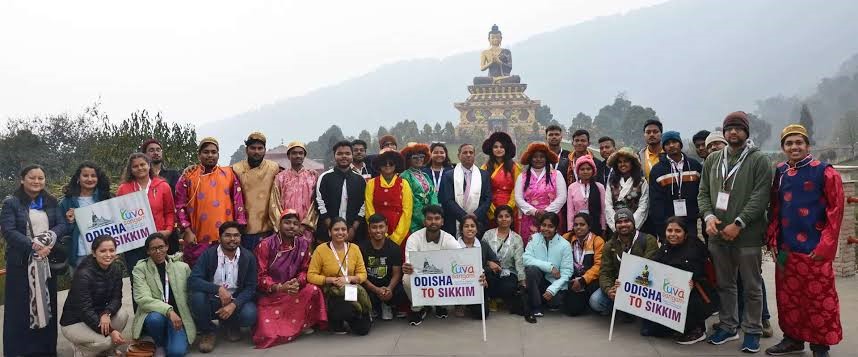
Yuva Sangam (Phase III)

21.10.2023
Yuva Sangam (Phase III) , DAily Current Affairs , RACE IAS : Best IAS Coaching in Kanpur
|
For Prelims: Origin and Objectives of the Yuva Sangam,Implementation For mains GS paper 2: Yuva Sangam,Significance,Ek Bharat Shreshtha Bharat,Initiatives taken up under the Ek Bharat, Shreshtha Bharat |
Why in the news?
Recently, the registration portal for Phase III of Yuva Sangam, under Ek Bharat Shreshtha Bharat (EBSB), was launched.
Origin and Objectives of the Yuva Sangam:
- The idea of initiating greater cultural interactions among Indians from different regions was put forth by PMO India in 2015. Subsequently, the Ek Bharat Shreshtha Bharat scheme was launched in 2016.
Implementation and Coverage of the yuva sangam
- Yuva Sangam is organized by the Ministry of Education in collaboration with the ministries of Culture, Tourism, Railways, Information & Broadcasting (I&B), Youth Affairs & Sports, Home Affairs etc.
- Over 3000 youth from across India have already covered various states under the program so far.
About Yuva Sangam:
- It is an initiative by the Government of India to strengthen people-to-people connections between youth belonging to different States/UTs of India.
- Interested youth in the age group of 18-30 years, mainly students, NSS (National Service Scheme)/NYKS (Nehru Yuva Kendra Sangathan) volunteers, employed/self-employed persons, etc. may register through the YUVA SANGAM portal to participate in the forthcoming Phase.
- It was launched under EBSB, and draws inspiration from the National Education Policy (NEP) 2020.
- It focuses on experiential learning and imbibing knowledge of the rich diversity of India on a first-hand basis.
- It is an on-going cultural exchange with the celebration of diversity at its core wherein participants gain an immersive experience of diverse facets of life, natural landforms, development landmarks, recent achievements, and youth connect in the host state.
- Twenty eminent institutions across India have been identified for Phase III of Yuva Sangam.
- During Phase III of Yuva Sangam, participants from 20 HEIs will be visiting 22 states and UTs.
Significance
- Under this, the youth will receive multi-dimensional exposure in five broad areas will be provided to them, which are Paryatan (Tourism), Parampara (Traditions), Pragati (Development), Paraspar Sampark (People-to-people connect), and Prodyogiki (Technology).
Ek Bharat Shreshtha Bharat’
- The ‘Ek Bharat, Shreshtha Bharat’ scheme was launched by Prime Minister Narendra Modi on Ekta Diwas i.e., 31st October 2015, on the occasion of the 140th birth anniversary of Sardar Vallabh Bhai Patel, drawing inspiration from the life of India’s freedom fighter.
- Through this innovative measure, the knowledge of the culture, traditions and practices of different states & UTs will lead to an enhanced understanding and bonding between the states, thereby strengthening the unity and integrity of India.
- Implemented under the overall guidance of the Ministry of Education.
- It aims to enhance interaction & promote mutual understanding between people of different states/UTs through the concept of state/UT pairing.
- Under it rich culture, heritage, customs and traditions of paired states will be showcased in each other’s states
- This cultural exchange amongst states enables people to learn about the culture of different states and regions, promoting the spirit of national integration.
- The idea is to create a learning ecosystem between the various stakeholders of the partnering states so that they benefit from the best practices of one another by establishing a state-to-state connection.
Initiatives taken up under the Ek Bharat, Shreshtha Bharat
- Award-winning books and poetry, popular folk songs have been translated from one language to the language of the partner state
- Culinary events have been organized to learn culinary practices of partner states
- Homestay for visitors coming from partner states
- Rajya Darshan for Tourists
- Accepting the traditional attire of other states and Union Territories
- Exchange of information like traditional agricultural practices with partner states
Source:PIB